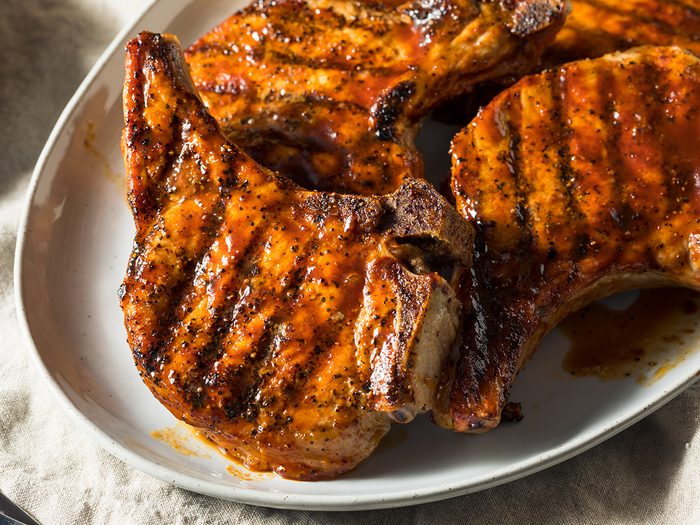
Grilling Tips for Pork
“We all grew up eating shoe-leather pork,” says Angie Quaale, owner of Well Seasoned, a gourmet food store in Langley, B.C. “You just want to cook it till it’s done. There should even be a tiny bit of pinkness left in the centre.” If you’re a beginner, start with pork chops. Once you register an internal temperature of 145 F (yes, owning a meat thermometer is essential), pull the pork chop off the grill. To enhance the moisture in the pork, experienced chefs can try brining chops in a water-salt-sugar mixture overnight.
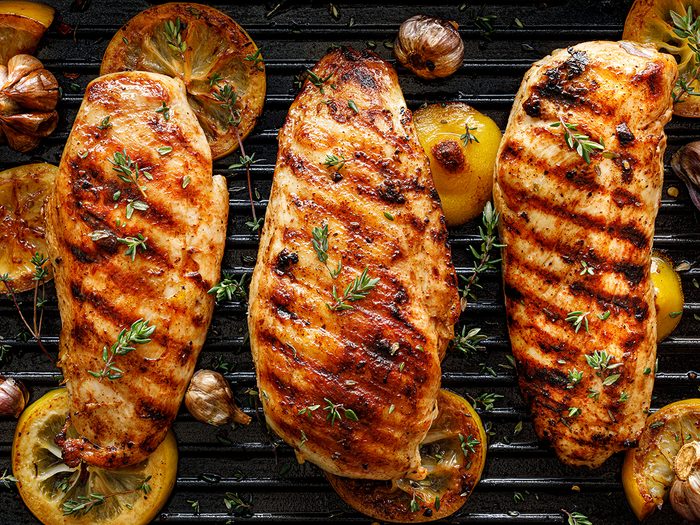
Grilling Tips for Chicken
Rushing chicken on the grill will burn the outside and leave the inside undercooked—and that’s really not good. (Brush up on the grilling mistakes that could make you sick.) “Well done is 160 to 165 F,” says Toronto-based barbecue expert Ted Reader. Quaale suggests rookies start with something simple. Try a boneless, skinless breast: butterfly the chicken, season both sides and cook over medium-high heat. More adventurous types can cultivate a smoky flavour by putting wood chips in a cast iron box inside their gas grill.
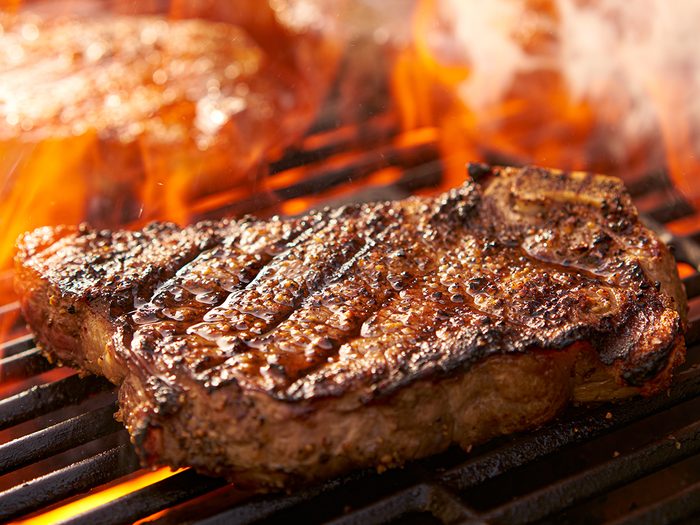
Grilling Tips for Steak
“You want to have a screaming hot grill when you put on a steak,” says Quaale. Speed is key, and don’t keep flipping the meat—once or twice should be enough. Feeling fancy? There are a handful of grilling tips for taking that prime cut to the next level. Try out a reverse sear—cook the steak at 225 F for about an hour. When the meat’s inner temperature reaches 120 to 125 F, crank up the grill to 600 F and sear the sirloin for one to two minutes per side for a perfect, juicy medium rare.
Here are 20 things you’re not grilling—but should be.
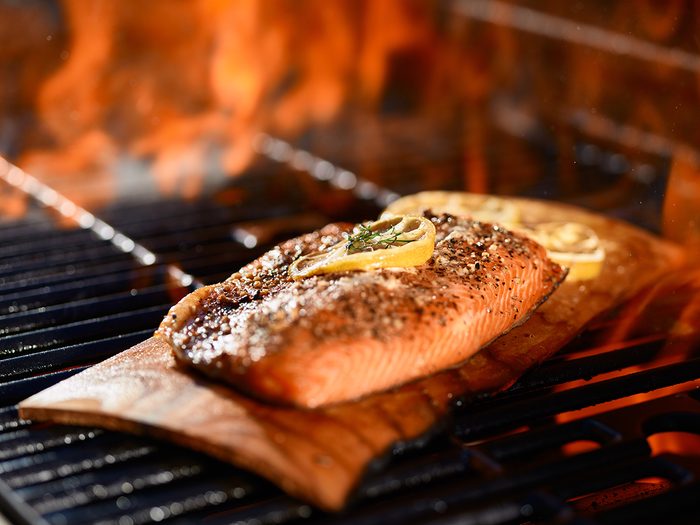
Grilling Tips for Seafood
Beginners can try placing oceanic fare, like salmon or scallops, on a wooden plank (cedar, maple, hickory and alder are good bets) that’s been soaked in water. “The plank creates some steam and cooks the fish right through, giving it great flavour without drying it out,” says Quaale. (Find out the healthiest fish you can eat.)
For direct grilling, season the grates with non-stick cooking spray before you turn on the barbecue (a hot grill will turn that pressurized can into a flame-thrower). Give the fish a little spritz, too, just before it hits the heat. But don’t think about going anywhere—this stuff will cook fast. If the fish sticks, Reader says, “It’s not ready to be turned. Wait. Have a sip of beer. Then slide a nice, sharp-edged spatula under the fish, lift it and roll it over.”
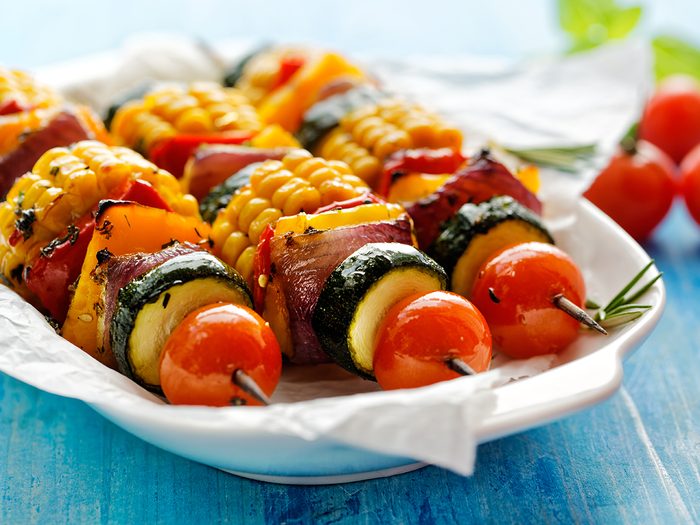
Grilling Tips for Vegetables
If you’re cooking veggies as a side, you may want to throw them on the barbecue first; some vegetables take even longer to cook than animal proteins. Prepare twice as much as you think you’ll need (they’ll make great leftovers—just don’t store them in aluminum foil) and be bold in your choices: eggplant, sweet peppers, green onions—even fruits like pineapple and peaches—are all great options.
For corn, soak the cob in water for two hours with its husk on, then grill it whole—the steam will cook the corn nicely. Even leafy greens can be terrific when lightly charred with olive oil. “Cut some romaine into three or four pieces and make a grilled Caesar salad,” says Quaale.
Ready to put these grilling tips to work? Here are 30 quick BBQ recipes ready in 30 minutes.